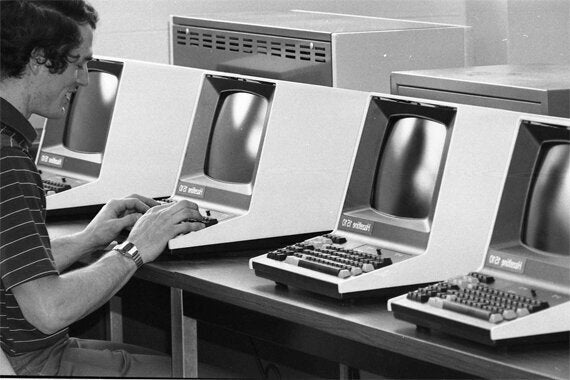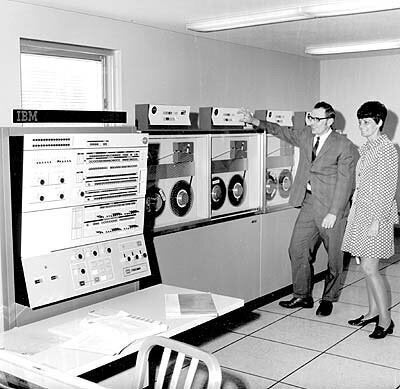
A close friend of mine called Oscar runs a medium sized business in the health sector. For many years now his finance department has been run by a silver haired, 60 something, semi-retired accountant called Alan. Alan spends about 2 days a week working in the business.
Throughout his professional career in big organisations Alan always used Sage, so it was a natural choice when it came to Oscar's business. And for many years it worked quite well. Oscar could never understand the Sage interface itself, and many others in the company struggled to use it, but Alan was familiar with it, so it was kept.
That all changed when Oscar discovered Xero. Suddenly here was an accounting package that made sense, with a beautiful interface. It didn't require extensive training or years of experience to use, it was intuitive - just like the apps that Oscar was used to using on his iPhone.
Immediately Oscar wanted to use Xero in his business, but Alan pushed back. As far as he was concerned if you wanted accounting packages you went to Sage, SAP or Oracle. He didn't know anything about Xero and quite frankly didn't trust it.
For me, this sums up the quiet revolution going on in business at the moment. For years, enterprise software was functional but unexciting, with CIOs preferring security and reliability over something as frivolous as user experience.
But no longer - a new generation of enterprise customers, used to apps like Uber and Xero are asking the question.
"Why can't all applications be like this?"
Consumer software doesn't come with an instruction manual
Consumer software companies and in particular contemporary starts ups, spend a lot of time making their interfaces as intuitive as possible. When you boot up Uber for the first time, the whole experience moves you through the cab hailing process effortlessly and easily. At each point in the journey it's clear where you are and where you have to go next.
Traditional Enterprise software on the other hand has often relied on manuals and training programmes to upskill it's user base. The interfaces have to be 'taught' in classrooms like foreign languages.
User Experience Director at Huge, Scott Shaw knows a thing or two about Consumer Applications. He was the lead UX designer on the Beats Music application, which eventually became Apple Music.
"I first encountered SAP when I worked at RGA", said Scott, "we had to use it to fill out our expenses. It was so clunky and awkward to use, I genuinely thought that it had been designed to discourage people from filing expense claims. It's so typical of badly designed enterprise software. As far as I'm concerned, if you have to use an instruction manual you've failed."
Consumers are not forced to use the software - they have to fall in love with it.
In big business, the decision about which software package to use is normally made by a few people at the top of the organisation. IT professionals in large organisations tend to be risk averse. In fact, they are generally paid a lot of money to keep things running smoothly and minimise risk.
Continuing the status quo and choosing an industry standard software package is low risk. Going out on a limb and selecting a challenger is high risk. If you screw up you'll probably get the sack. If you succeed, well you might make some users happy, but will your manager really notice the beautiful new interface on your stock control system?
It's a lot of downside, and not much upside.
But what effect does this have on software development? Well if you're the dominant player in an enterprise market, it means you don't have to try too hard at least not where the interface is concerned. Your job is to persuade a small number of decision makers that your software is the right choice, and interface is a small part of that. Reputation, support, functionality...these are all things that matter a lot more.
It's not going to matter much if Joan in accounts can't find the save button, if the CFO is getting the weekly reports he needs.
With consumer software, it's a different story. The decision maker and the user are often one and the same. Your job as a software vendor is to beguile them from the get go. Domestic consumers care less about reputation and support and much more about how the software feels to them. Is it easy to use? Does it do what it's supposed to do? Does it surprise and delight?

The enterprise vendor business model
If you were being kind, you could say that the poor usability of Enterprise software is down to the 'designed by developer' syndrome. Anyone who's worked in software development knows this. The developer does his work, merrily ticking off a list of 'functionality' to be rolled out, without giving too much thought to something as fluffy as 'user experience'.
But if you were being cynical, you could point to the business model of most old school enterprise software vendors - a combination of expensive licence fees and even more expensive implementation. It's actually in the vendors interest to obfuscate the system. The harder it is to understand, the more you can charge for 'consultancy'.
Kushal Puri works at KPMG's SME division mentoring early stage start ups. Prior to this he worked in KPMG's auditing side and had extensive experience with the big accounting packages, notably SAP. Like Shaw, he is not a fan.
"The user interface is not at all intuitive. It's really hard to figure it out. That's a result of years and years of focus on functionality and an element of making it more complex on purpose. SAP makes the add-ons as expensive as possible and you're forced to buy the training from SAP certified consultants. Complexity helps them to extract lifetime value of the customer."
Times are a-changing
But a new generation of digitally native enterprise consumers are no longer content to put up with badly designed interfaces. There's a perceptible power shift taking place away from the few at the top of the organisation to the people in the middle, the actual users.
And it's clear that the people want nicer software.
The movement towards the SAAS model of software has played no small part in this. In the past a system purchase was both expensive and complex and often involved both hardware and software. But these days SAAS makes it easier for employees to purchase a platform using just a credit card. As most SAAS platforms work on a free trial basis, for this to work, the interface needs to be beautiful and draw people in straight away.
And the reality is bearing this out. KPMG's SME division were searching for an accounting package to offer their clients. Interestingly enough they didn't plump for one of the big old school systems, but a KPMG branded re-skin of Xero, one of the best known accounting SAAS platforms. Puri explains;
"SAP is perceived to be more powerful, but that's not necessarily the case. If you could just implement the right add-ons from Xero it could be as powerful as SAP. The key difference for our clients is that you don't need to be trained to use the software."
What's more, both Slack and Xero have a playfulness and an irreverence that appeals to a new generation of business users and makes the enterprise software of old look stuffy and out of touch.
Perhaps this new breed of software is part of a wider trend in society. A move to a dressing down culture - a loosening of ties and of old formalities. If that is true, then it's systems like Xero and Slack that appear to be swimming with the tide and systems like SAP that are pushing against it.
There's resistance from the old guard, but change is coming. Today's millennials will be tomorrow's C-suite and they won't put up with crappy interfaces for long.
Photos Dave Winer